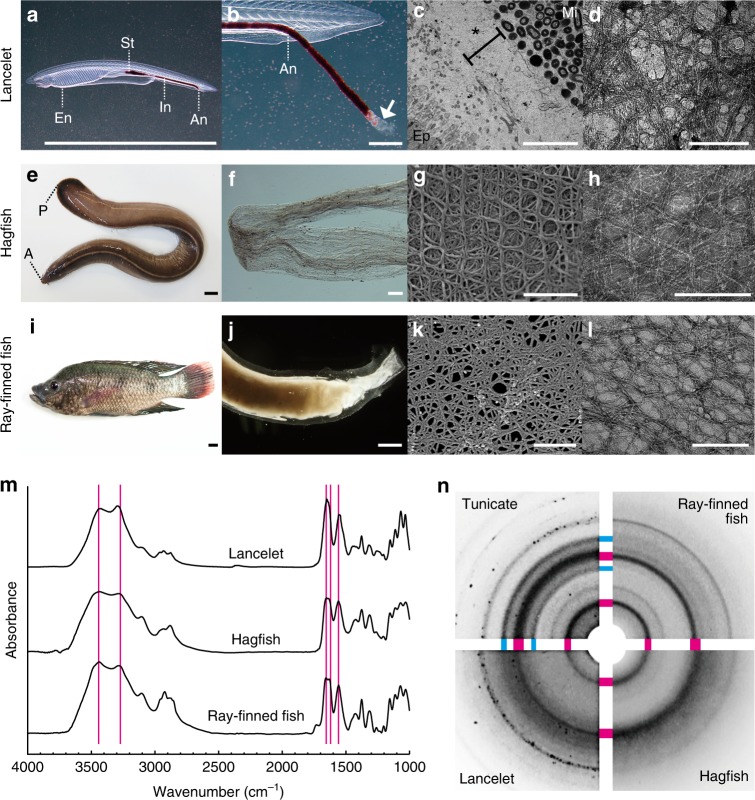Fig. 5.
Intestinal chitinous membranes are widely distributed in chordates. a The lancelet, Branchiostoma floridae, is an internal filter-feeder that uses mucus nets, like tunicates. Mucus nets, secreted from the endostyle (En) and transported to the stomach (St) and intestine (In), are recognizable by their trapped red beads. For details, see Supplementary Fig. 2 and Supplementary Movie 2. b Mucus nets defecated from the anus (An) are enveloped inside a translucent membrane that forms a hollow tube (arrow). c A TEM image of gut cross-section showing that ingested microbes (Mi) are separated from the densely ciliated epithelium (Ep) by multi-layered membranes (*). d A negative-stain TEM image of a partially purified membrane showing crystalline nanofibers. e The hagfish, Eptatretus atami. The anterior and posterior ends of the body are indicated by A and P, respectively. f Upon starvation, E. atami intermittently excretes translucent empty tubes. g An SEM image of a purified tube showing a multi-layered, woven pattern of nanofibers. h A negative stain TEM image of a purified tube showing crystalline nanofibers. i The ray-finned fish, Oreochromis mossambicus (Mozambique tilapia). j O. mossambicus excretes tubular feces enveloped inside a membrane. k An SEM image of purified membrane showing meshed nanofibers. l A negative-stain TEM image of a purified tube, showing crystalline nanofibers. m Spectroscopic profiles of purified membranes (FT-IR spectra). Magenta vertical lines indicate peak positions specific to chitin (α allomorph). n Crystalline profiles of purified membranes. This composite image shows near quarter sections of the original X-ray diffractograms, combined with arcs depicting chitin-specific or cellulose-specific signals (magenta or cyan, respectively). Scale bars a, e i 1 cm; b 200 μm; c 5 μm; d, g, h, k, l 100 nm; and f, j 1 mm

